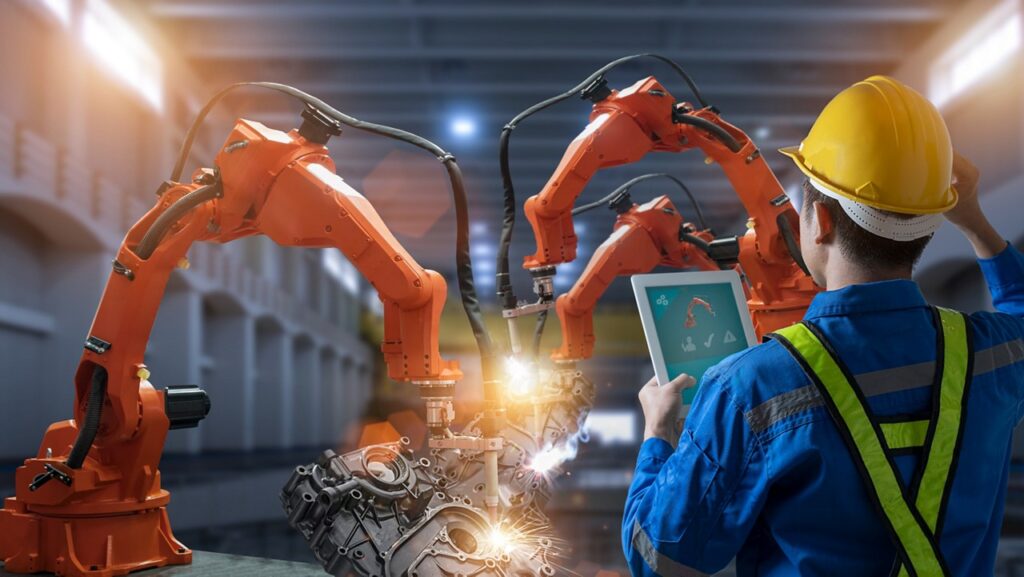Artificial intelligence (AI) is increasingly becoming a cornerstone of the manufacturing industry, particularly within the framework of Industry 4.0. While the capabilities of AI range from enhancing efficiency to improving quality control, its integration is not without challenges. Common issues such as errors in automation, API rate limits, and integration difficulties can hinder operations and lead to increased costs. Understanding these challenges and how to effectively troubleshoot them is essential for manufacturers seeking to maximize their return on investment (ROI) in AI technologies.
One of the significant problems encountered in automation is the potential for errors during data processing. These errors can arise due to software glitches, incorrect configurations, or unexpected operational conditions. When such errors occur, they can disrupt production workflows, leading to unexpected downtimes and losses. To troubleshoot these errors effectively, first, it’s crucial to implement a robust monitoring system. This system should provide real-time feedback on production metrics and alert operators to deviations from expected performance. By integrating machine learning algorithms, manufacturers can gain insights into recurrent error patterns. Once these patterns are identified, teams should document the occurrences to establish cause-and-effect relationships, enabling them to adjust settings or update software configurations accordingly.
API rate limits can also present a significant barrier, especially when multiple systems and applications are integrated within a manufacturing ecosystem. When these limits are reached, processes that rely on these APIs may fail to execute or experience delays, causing bottlenecks. To manage API rate limits effectively, it’s advisable to prioritize API calls based on criticality. Implementing a queuing system can optimize how requests are processed, reducing the likelihood of hitting rate limits. Additionally, consider employing batch processing techniques to minimize the number of API calls needed at any one time. For instance, combining multiple requests into a single call can reduce the load and help sustain operations without interruption.
Integration issues can significantly impact the functionality of AI-driven manufacturing systems. These challenges often arise when disparate systems and devices need to communicate seamlessly. To mitigate integration difficulties, manufacturers should adopt standardized protocols that enable smooth data transfer between systems. Conducting thorough compatibility assessments before implementing new software or hardware can prevent many integration-related problems. It is also imperative to maintain detailed documentation of all integration processes, as this will serve as a useful reference when troubleshooting potential issues.
Besides these common problems, the risks associated with prolonged downtimes or unresolved issues can lead to diminished operational capabilities and increased costs. Each minute spent resolving these issues can equate to lost revenue and tarnished customer relations. Therefore, investing in robust troubleshooting frameworks and skilled personnel is essential for ensuring that manufacturing operations remain efficient and responsive.
The ROI of resolving AI-related errors quickly cannot be overstated. For example, efficient maintenance practices can significantly reduce operational costs associated with machinery downtime. Predictive maintenance powered by AI can forecast equipment failures before they occur, allowing manufacturers to schedule maintenance at the most opportune times and save on repair costs. Implementing AI-driven quality control systems also leads to the early detection of defects, thereby minimizing waste and ensuring that products meet established standards before reaching customers.
As manufacturers increasingly adopt AI technologies, it becomes clear that overcoming integration and operational challenges is crucial to realizing the full potential of these systems. Practical troubleshooting strategies not only improve daily operations but also foster a culture of continuous improvement that is vital for future success.
Ultimately, as manufacturing evolves with the rise of AI, embracing intelligent automation becomes an imperative. By prioritizing the resolution of common automation issues, manufacturers can set themselves on a path to operational excellence.
FlowMind AI Insight: The necessity of resolving integration and operational issues in AI systems can drive efficiency and profitability in manufacturing. By adopting a proactive approach to troubleshooting, companies can harness the true power of AI, paving the way for sustained innovation and growth.
Original article: Read here
2024-09-03 07:00:00

